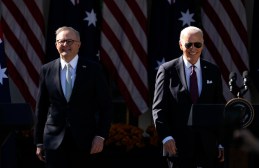U.S. finally submits fourth National Action Plan for Open Government

After much delay, the U.S. government quietly published a fourth National Action Plan for Open Government on Thursday, the first under the Trump administration.
The six-page document sets out the federal government’s commitments to openness for the next two years, from 2019 through 2021. It includes a total of eight governmentwide “initiatives,” many of which are already ongoing.
The first initiative, to “Publish a Comprehensive Federal Data Strategy,” may sound familiar — it’s a commitment first made by the President’s Management Agenda in March 2018. And commitment number five, “Create Agency-Level Chief Data Officers”? That’s a component of the bipartisan OPEN Government Data Act, passed earlier this year.
But while some open government advocates critique the recompiling of existing efforts as a way to avoid making further commitments to transparency and openness, the White House says this strategy is a feature, not a bug.
“You can’t talk enough about your priorities,” a White House official involved in the creation of the plan told FedScoop. The international community that makes up the Open Government Partnership — a voluntary group of countries that first came together in 2011 — may not be as familiar with the work of the U.S. government as D.C.-based advocacy groups. And it’s this international community that is the “primary audience” for the document, the official said.
The plan doesn’t hide the fact that it chooses to put the spotlight on ongoing work instead of setting new goals. “This action plan seeks to highlight relevant and illustrative commitments that advance open governance objectives and the broader goals of the OGP community,” the document states.
Past plans, in contrast, have laid out both ongoing efforts across the government and new initiatives. They’ve also tended to include a lot more — the third NAP, for reference, included 45 commitments when it was released in October 2015.
Officials have said the goal with NAP 4 was to create a more “streamlined” edition, largely on the advice of the OGP. “They were like we really want you to focus on five to ten high-profile, high-impact projects,” the White House official told FedScoop.
But the plan isn’t just lighter on content than its predecessors. It’s also between six and seventeen months late, depending on how one measures.
This delay didn’t go unnoticed — the OGP placed the U.S. “under review” in January after it failed to meet an (already extended) deadline of Dec. 31, 2018. OGP generally moves slowly, if at all, to chastise countries that fall short of their commitments, so having a founding nation of the partnership like the U.S. out of compliance for too long could have created legitimacy issues for the group.
Given all this, the publication of a fourth national action plan, the first under a new political administration, is “a victory” for OGP, the White House official said. The official admitted that there were internal debates about whether to continue the U.S. participation in OGP. The fact that this question was decided in the affirmative further institutionalizes the initiative, the official argued.
The broader issue here, of course, is the political environment in which this plan makes its debut.
When FedScoop interviewed various members of open government and transparency groups in October 2017, when NAP 4 was first supposed to be released, many expressed concern over what it means to have the Trump administration — which has openly flaunted transparency norms — involved in an open government effort. Demand Progress, for example, declined to participate in the drafting of the NAP 4, citing what it called Trump’s “authoritarian policies.”
Open government advocate Alex Howard did participate but says he was underwhelmed by the co-creation process and what was ultimately chosen to be included in the plan. “The final objective [of NAP 4], which is aimed at improving ‘Public Participation in Developing Future U.S. National Action Plans,’ is painfully ironic, given how little effort at public engagement the Trump White House and federal agencies made over the past two years,” he wrote on E Pluribus Unum on Friday.
The NAP 4 document doesn’t address this.
The White House officials who worked to get the plan out the door understand that it will face criticisms from various angles, but hope the document will be assessed based on what it achieves.
“Ultimately, it should be judged based on whether or not we fulfill the commitments,” the official said.





